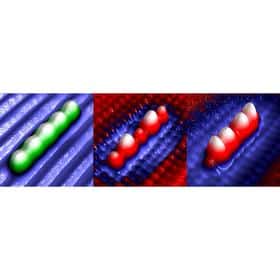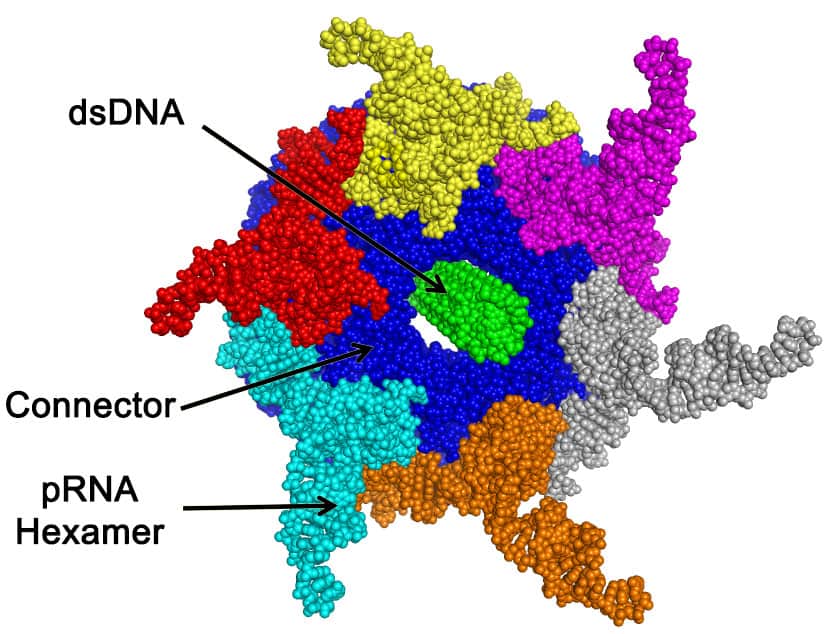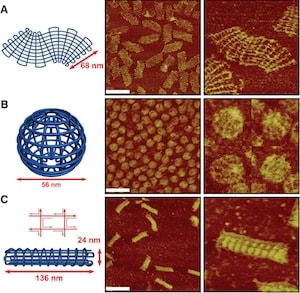Nanotechnology researchers in London have used a scanning tunneling microscope to create atomically precise quantum states from dangling bonds on a silicon surface.
Atomically precise placement of dangling bonds on silicon surface


Nanotechnology researchers in London have used a scanning tunneling microscope to create atomically precise quantum states from dangling bonds on a silicon surface.

Revolution of DNA around a central channel, rather than rotation, is the method used by a viral molecular motor to package DNA. A structure facilitating bottom-up assembly may lead to roles in nanotechnology for these nanomotors.
In anticipation of Eric Drexler’s new book, Forbes contributor Bruce Dorminey interviews him about the meaning of nanotechnology and its revolutionary prospects. Selected excerpt: … In what fields would APM cause the most pronounced economic disruption and the collapse of global supply chains to more local chains? The digital revolution had far-reaching effects on information… Continue reading Nanotechnology revolution: An interview with Eric Drexler

By forcing the geometry of the junctions upon which DNA nanotechnology depends, researchers have increased the collection of 2D and 3D structures that they can build to include wire frames and mesh structures.

A proposed large project to produce a dynamic map of the functional connectome of the human brain will require a convergence of neuroscience, biotechnology, nanotechnology, and computation, and may therefore spur the development of advanced nanotechnology leading to molecular manufacturing.

In a 47-minute interview Christine Peterson discusses the future that science and technology is bringing over the next few decades, and how to get involved to push the future in a positive direction.
An interview with Foresight Co-Founder and Past President Christine Peterson covering both the current state and the future prospects of nanotechnology is available on Youtube.

Scanning probe manipulation of individual atoms and small molecules were amongst the early laboratory successes that helped bring broad scale attention to the feasibility and potential of nanoscale technologies, especially molecular fabrication. Basic manipulations of atoms and bonds by scanning probe have become familiar capabilities that follow similar protocols: the STM tip is precisely positioned… Continue reading Toward molecular fabrication: formation of distinct bond types by STM

A demonstration that most fundamental biological processes can be implemented in a test tube as efficiently as in live bacteria provides synthetic biology the tools to create a ‘new industrial revolution’, which may or may not lead to more general molecular manufacturing.

A small molecular machine based on a rotaxane molecule autonomously added three amino acids in a programmed order to a seed tripeptide to form a hexapeptide